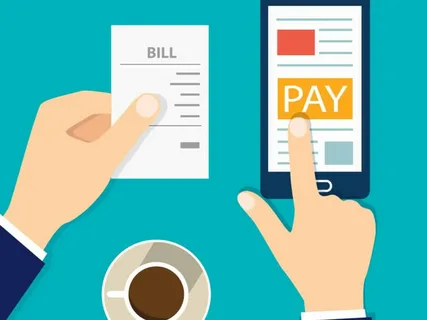4 Banking Jargon You Should Know for Day-to-Day Spending
If you’re not working in the financial sector, banking jargon can sometimes feel like a completely different dictionary. When opening a bill or checking your account, you probably noticed multiple words that make you pause and think, even if they look familiar.
From your bank statements and online banking apps to utility bills and payment notifications, these terms pop up everywhere. To manage your money properly, it’s important to understand what these banking jargons means.
While you might find some phrases to be overly technical, their actual meaning is usually straightforward. Knowing the meaning behind this fiscal mumbo jumbo can help you avoid mistakes and feel more confident when handling payments or reviewing your accounts.
With that in mind, here are 4 banking jargons we’ll walk through today. You’re likely to come across these terms regularly in everyday spending, so understanding what they mean can save you from scratching your head later.
1. In Debit
The phrase “in debit” is a term that you’ll often see on bills or account summaries, but it’s not always immediately clear what it means. In simple terms, it indicates that you owe money. This could be on a utility bill, a credit card account, or even within your energy provider’s monthly statement.
For instance, if your energy bill says you’re “in debit” by £50, it means your usage has gone over what you’ve paid so far. The difference hasn’t been covered yet, so there’s an outstanding balance in your account. This is especially common in winter, since you’re more likely to use the heater more frequently.
Still unsure and asking yourself what does “in debit” mean? You can check out this helpful guide by Salad that explains it further, including common reasons why it shows up on your bills and how to resolve it, if need be.
2. Overdraft
An overdraft allows you to spend more money than you currently have in your bank account. When this happens, the bank covers the extra amount temporarily, and your balance goes into the negative until you repay it.
There are two main types of overdrafts in the UK: arranged and unarranged. An arranged overdraft is set up in advance with your bank, where you’re given a limit, and fees or interest may apply depending on the agreement.
An unarranged overdraft occurs when you exceed your balance without prior approval, often resulting in higher charges. With recent UK regulations, many banks have simplified their overdraft fees and interest, but unarranged overdrafts can still lead to significant extra costs. This type of overdraft is typically used as a short-term option in an emergency, so it’s important to keep track of how often it’s used to avoid incurring high charges.
3. Standing Order
A standing order essentially allows you to set up a recurring payment with your bank to automate regular payments of a fixed amount to another account. You simply need to choose the amount, the person or business it goes to, and how often it should be paid.
This kind of setup works well for things like rent or regular savings after your payday each month. Since the payment is fixed, it’s easy to plan around as you know exactly what your balance will look like after the transaction is complete.
You might think that this is similar to Direct Debit, but what makes a standing order different is that the control stays with you. The person or company receiving the money can’t change the amount or timing, whereas in Direct Debit, the organisation you’re paying to is allowed to correct varying amounts on different dates.
4. Pending Transaction
When you make a card payment or online purchase, the amount doesn’t always come out of your account straight away. Instead, it may appear as a “pending transaction”, meaning that the payment has been authorised but hasn’t fully gone through yet.
In this case, the money is still part of your available balance for now, but it’s marked for that transaction and will be deducted from your account soon. Depending on the platform where you’re making the payment, this can take anywhere from a few hours to a couple of days to process.
If you ever notice a “pending transaction” on any of your payments, it’d be helpful to make a note of it to avoid accidental overspending. Once the transaction is fully processed, it’ll move from pending to completed, and the funds will be removed from your balance.
To Sum Up
Understanding common banking terms can make a real difference in managing your money with confidence. When you know what the jargon on your statements and bills means, it’s easier to spot issues early and avoid surprises down the line.
Taking a little time to get familiar with these phrases helps you stay in control of your finances. It also makes conversations with banks or service providers simpler, since you’ll know exactly what’s being discussed.
If any of the terms still feel unclear, there are plenty of resources and guides available to help. The more you learn, the easier it will be to handle your day-to-day spending without worrying about any banking jargon.






